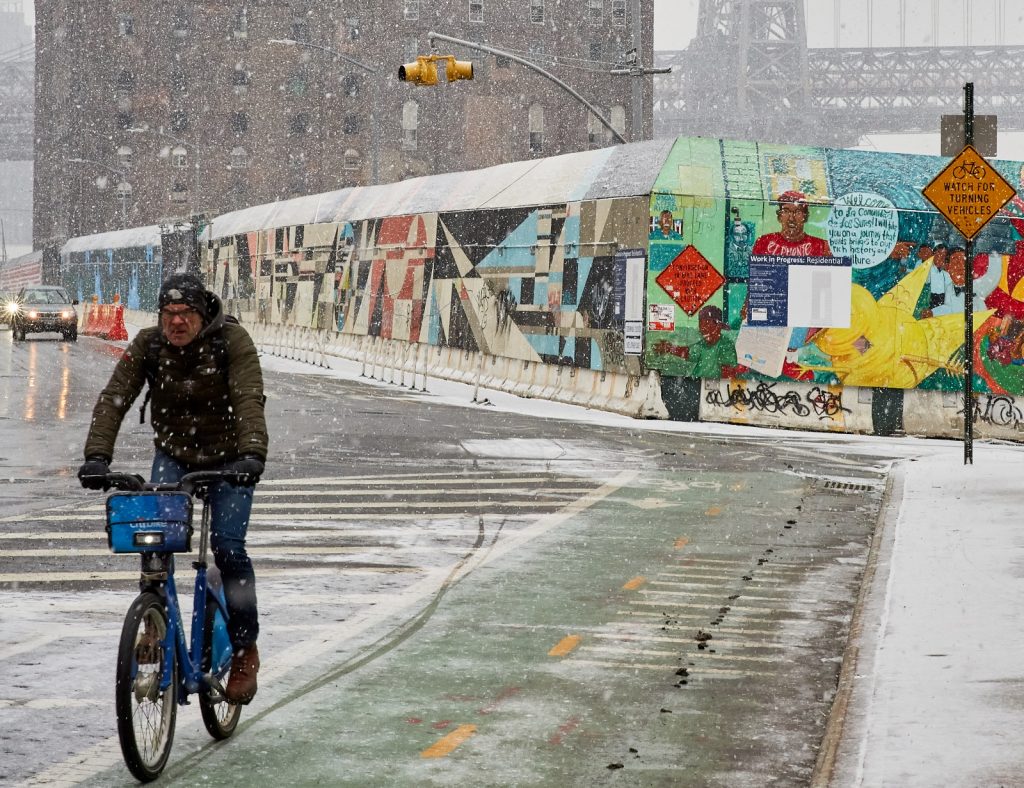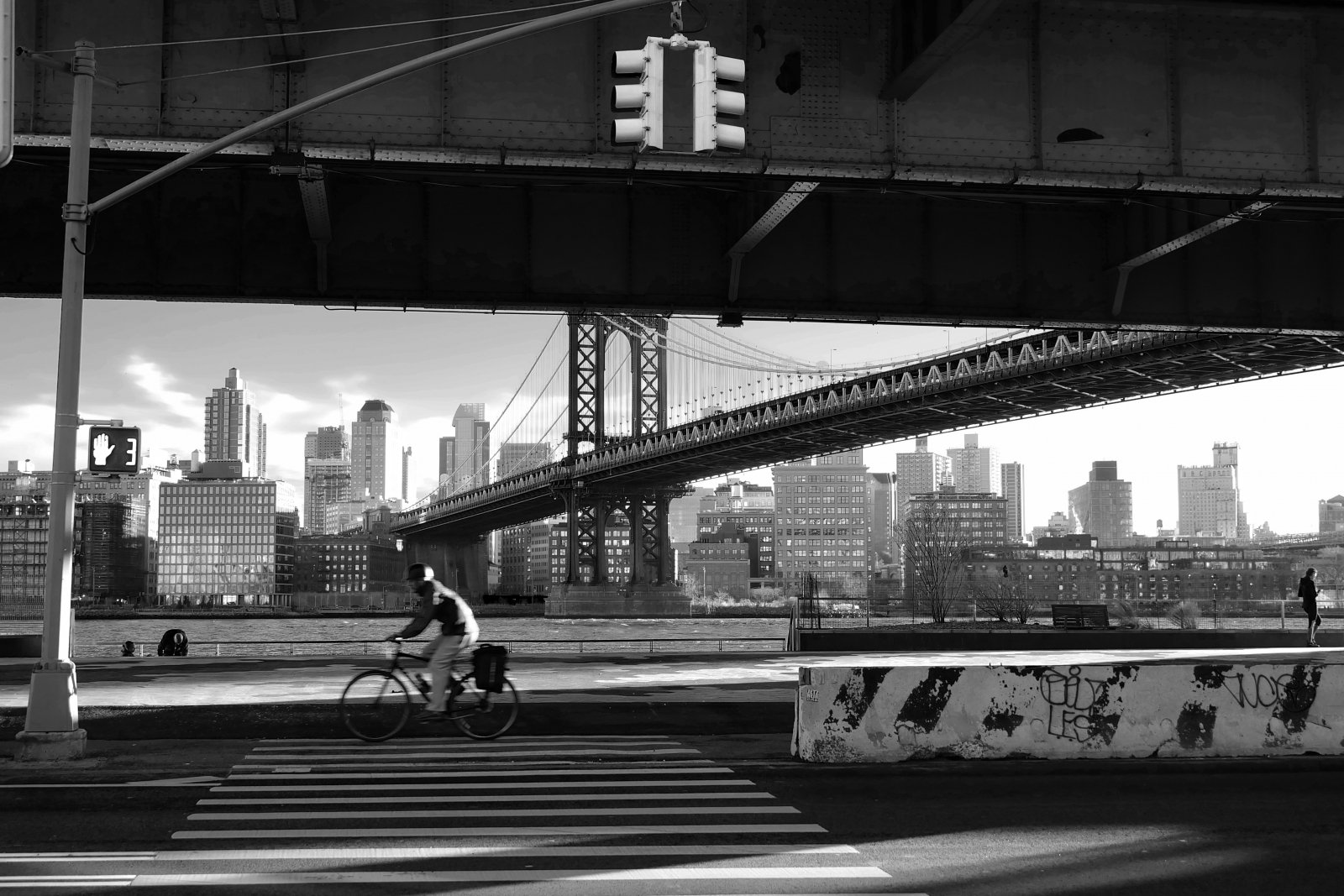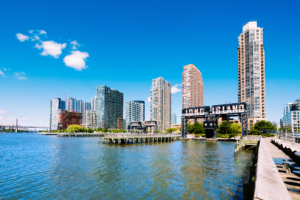The L Train Shutdown

All this week, StreetEasy is covering the L train shutdown planned for April 2019, reporting on its impact on the housing market and how those affected plan to respond. Our coverage is running now to help readers make housing decisions well in advance of the shutdown. See all our L train shutdown coverage.
When the L train shuts down between Manhattan and Brooklyn in April 2019, one non-motorized form of transportation may become much more attractive: the bicycle. The MTA estimates that only 2 percent of the 400,000 or so riders who use the L every day will switch to a bike, but that still means thousands more cyclists on New York streets. New bike lanes are planned to handle them, and these will likely be well-traveled — especially in Manhattan, where there’ll be no crosstown L service and some rather busy busways along 14th Street. (The L will still run to all its usual Brooklyn stops; just not in Manhattan or through the Canarsie Tunnel between boroughs).
Doubtless, some intrepid Brooklynites, eyeing the potential for a 35-minute increase in their commute time to Manhattan, will also decide to take their chances on two wheels. Even in winter. What exactly are they in for? To find out, we talked to a couple of cyclists familiar with the year-round commute over the Williamsburg Bridge.
Perfect Views of the City
For Thomas Barrett, a 26-year-old high school math teacher who lives in Greenpoint, the decision to rely on a bicycle to get to work was simple: It’s cheaper than any other form of transportation, and quicker, too. Barrett starts around 7 a.m. on the northeastern edge of Brooklyn, not far from the Kosciuszko Bridge, and rides his single-speed Fuji Classic down through Williamsburg, over the Williamsburg Bridge, and then into the Lower East Side, to his school on the corner of Grand and Essex streets. The roughly three-and-a-half mile ride takes 20 to 25 minutes, Barrett says, compared to a 45-minute (or longer) commute on the subway.
His decision to commute on a bike year-round wasn’t entirely about practicality. “I just love the actual experience of riding my bike,” Barrett says. “One of the best parts about the Williamsburg Bridge is riding over it in the morning, because it’s just got one of the most perfect views of the city.” Even on rainy days, Barrett says, the view from the bridge is stunning. “I have a fascination with seeing the skyscrapers, the very tops, covered in fog or covered in clouds.”
Unsurprisingly, weather also makes for some of the worst days of Barrett’s commute. As a high school teacher, he doesn’t have to contend with summer heat and humidity. Instead, he battles winter snow — which, when unplowed, makes for misery. “Especially on the bridge, the snow can start getting packed down and it gets a bit dangerous to traverse,” Barrett says. “I do it anyway, because I am relatively reckless.”
Barrett says his friends are always talking about getting him special winter tires for his bike, but he shrugs off the idea. He says he’s not a cycling enthusiast, not someone who rides in competitions or on long tours. But he does rely on some specialty cycling gear, like a face mask and a winter cap that fits under his helmet. He stays warm inside layers of shirts — five of them altogether — plus a North Face jacket and often two pairs of gloves. “You have to know what your body is capable of taking when it comes to the cold and the wet,” he says. “I generally just don’t care all that much.” Once at school, he changes into a button-down shirt and tie, and stashes his bike inside his classroom to keep it safe from the elements.

Unlike the Brooklyn Bridge, the Williamsburg and Manhattan bridges have bike lanes separated from pedestrian traffic.
When the work day is over, Barrett suits back up, trying not to hear his students chuckle at his many layers of clothing, and rolls off toward home. “I would absolutely recommend it,” he says of the bike commute, citing the time it allows him to relax and think. “I think it’s one of the better parts of my day.”
Frostbite: It’s a Thing
Clay Hartmann, by contrast, is a serious bike enthusiast, the sort of rider who goes mountain-bike racing in 7-degree weather for fun. Asked what kind of two-wheeler he rode into Manhattan during the five years he commuted (Hartmann recently moved to California), he couldn’t say which bike it was. He owned 30 or 40 different ones over the period.
Hartmann says he also loved the sweeping views from the views from the Williamsburg Bridge on his seven-mile commute from Bed-Stuy to the New School, where he was earning a Ph.D in Clinical Psychology. He didn’t just ride to school, but all over Manhattan, to various appointments and teaching gigs, and all year round. The choice to bike was partly out of love for the sport, and partly out of distaste for the subway — Hartmann simply hates the anxiety produced by those crowded rush-hour trains. Biking also facilitated greater speed and freedom of movement, enabling him to pack his day full of appointments, and helping him earn his Ph.D a year early, he says.
But biking also came with a cost. “I got frostbite the first and third year,” he says. “Which is annoying, because it stays with you usually for a couple of months.” (Ah, yes, frostbite — that mere nuisance!) “Once you get it, it’s always kind of there,” Hartmann says. It makes typing particularly difficult.
Hartmann didn’t necessarily get frozen fingers on the ride into Manhattan from Brooklyn — he took long rides up and down the Hudson River Greenway and Fifth Avenue, both of which are “wind tunnels” during the winter — and he did finally figure out how to keep his fingers warm: with those handlebar-covering mitts that delivery cyclists often wear, called pogies. “That really made the difference,” Hartmann says — pogies and snowboard goggles. He outfitted his bikes with disc brakes (which stop much faster in wet weather) and flat-resistant tires, and tried to enjoy wintry rides around the city as much as possible.
‘Everybody Gets Tickets’
All the riders we spoke with brought up safety as a major concern. Hartmann said that any regular cyclist, no matter how prudent, will run afoul of traffic laws at some point. “Everybody gets tickets,” he says. Barrett cautioned new riders against going too fast, and against wearing headphones — not just for safety, but for savoring the experience of those panoramic views.
Joe Nocella, owner of the commuting- and touring-friendly 718 Cyclery in Brooklyn, advised a conservative attitude when it comes to bike safety. “Obey all the traffic lights,” he says. “You have to earn respect from motorists to be given respect. You can’t just decide which traffic laws you’re going to decide to follow.”
Between the weather, the traffic, the accumulated snow, and the gear required to stay warm and dry, biking year-round requires fortitude and planning. Yes, the views are gorgeous; it’s daily exercise; and it gives you time to think to yourself. Even with all that, the greatest pleasure for bike commuters, Hartmann says, is one all New Yorkers share: the arrival of spring. “It’s so great when spring hits, and it goes from 25 at night to 45 at night,” he says. “All of a sudden you just feel like you’re this amazing athlete that caught a second wind.”
Asked if he’d recommend a year-round bike commute in Manhattan, Hartmann paused. He continued pausing. “Yes,” he said. (Pause again.) “100 percent.”
>> See more of StreetEasy’s L train shutdown coverage.
—
Hey, why not like StreetEasy on Facebook and follow @streeteasy on Instagram?









